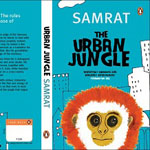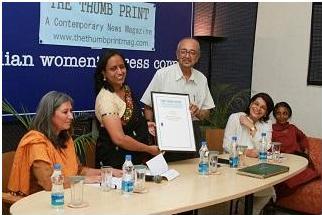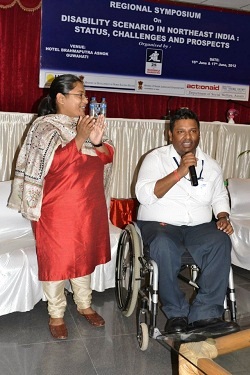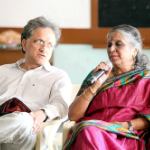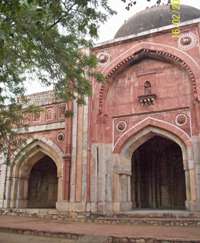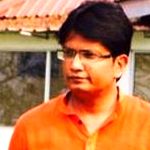The return of Shillong to aspects of its troubled past is sad and worrying for anyone who loves the beautiful hill town famed for its love of music and football. Suddenly the good things stop making news, stop even to matter, when you have stories of innocent people being burnt alive in broad daylight. That is the kind of thing that makes a place famous for barbarism, and that taint is hard to wipe. Blood does not wash easily.
I love Shillong more than any place on earth. It is the land of my birth. I have lived half a life away from it now, but even today, when anyone asks, “Where are you from”, I do not say Delhi or Mumbai. I say Shillong, and I say it with pride.
To many in Shillong, I may be just another dkhar. In my own imagining, I am a Shillong boy, and will remain one till I die. I was born there and grew up there. It is a part of me. That fact cannot be erased or denied.
Yet, it is very hard for me to speak about Shillong. I have memories of persecution, of fear, of living with just the kind of incidents that are now starting to happen again in Shillong. I remember the violence of 1987, and of being randomly attacked on the street by complete strangers who saw my face and decided I did not belong there. I was just a child then.
None of us can choose in which house or community we will be born. It is a matter of fate. It should not be held against anyone if they are born dkhar in Shillong, or anything anywhere. What matters is what you do after you are born, and grow up. Who do you become? Do you become a murderer? A poet? A musician? An athlete? A statesman, or a crooked politician?
What matters is what you work to achieve. The rest is chance. There is no credit or blame for it.
You can choose to be a force of good, or a force of evil. In my book, and in every holy book too, murder is pure evil.
To engineer the murder of innocents in order to become rich or become more powerful is the worst kind of evil. Only someone who has no conscience and no morals would stoop to such a level. Such actions have become part and parcel of our politics. As journalists, we hear from informed sources about this politician paying someone money to create trouble here, or that politician deciding to allow a little riot for a couple of days there. The banality of evil has become so familiar as to be a cliché.
That does not make it all right. It makes it all the more necessary for every human being with a conscience to discover their latent humanity before they become inhuman.
A lot of truly inhuman acts have been justified by logic that made perfect sense to the perpetrators and those in their thrall. Hitler was a popular mass leader. People who thought they were doing the right thing manned the gas chambers of the Holocaust.
In the long run, such actions can never be right. The Gujarat riots are still haunting Narendra Modi, and the 1984 riots are haunting the Congress even now, though both parties have tried their best to distance themselves from those shameful events. The ghosts of the dead will not rest until justice is done.
Political protest must eschew murder of innocents. There may be good reasons for protest, but terrorism is not an acceptable response. The Oxford English dictionary defines terrorism as “the unofficial or unauthorized use of violence and intimidation in the pursuit of political aims”. Whether the violence is carried out using guns or petrol, it’s terrorism just the same.
Once there is agreement that terrorism is not acceptable, there can be discussion on genuine political issues. Dialogue with terrorists is ruled out in the civilized world.
Migration is a serious political issue and it needs to be discussed and debated. Illegal migration from foreign countries is not permitted by law and should not be allowed. There is no need for Inner Line Permit to prevent this, as existing laws already prohibit it. There are also certain ironies in the anger against Bangladeshi migrants. For example, the extremists who fight most violently against Bangladeshi migration somehow tend to end up in Bangladesh, at the mercy of the Bangladeshi mafia or intelligence agency. Such things have happened many times in the past.
Migration from India to other parts of India is harder to stop. The Inner Line Permit would make sense if there were massive migration of this kind into Meghalaya. It is doubtful such a thing is happening. The number of Marwaris or Bengalis from India who go to Shillong will probably number less than the number of Khasis and Garos who go to other parts of India for education and work.
Whether or not the ILP is imposed, those who are born and brought up in Shillong would be inside the inner line. They are not outsiders; they are equal citizens of Shillong and Meghalaya. Their faces may be different, but that does not mean they should be burnt to death for that reason.
Identity is a many-layered thing. In India, as in USA, we all have layered identities. For example, I am Northeast Indian of Bengali origin. Somebody else may be a Khasi Indian or a Gorkha Indian. There is no problem at all with being both.
I like the fact that I can live and work in cities like Delhi and Mumbai and still go home to Shillong. I like that I had the option to study anywhere in India. I like that I don’t have to apply for a visa to visit any of these places.
I do recall a Kashmiri who I met in Srinagar telling me he hoped the next time I went to Kashmir it would be with a visa. We had shaken hands and parted as friends, after a cup of coffee, because I respected his feelings even though I did not agree with him.
It may be that there are some in Meghalaya too, who would wish for a future for their ancestral lands independent from India. I can respect that dream too. My only caveat would be that it is futile, and result in pointless bloodshed.
India’s position as a rising global power is recognized around the world. It cannot be broken apart by force by any military in Asia except, perhaps, the Chinese. No amount of terrorism or insurgency will do it.
Back in 1947, there were 565 independent kingdoms in India. By now, 563 out of 565 have been so well integrated into India that it is hard to remember they were independent states only 65 years ago.
The two that have resisted the integration, Kashmir and Manipur, are still suffering. They are battlegrounds of clashing dreams, where reality is a living nightmare.
If they would simply accept layered identities and sovereignties, the problem could be solved tomorrow. When Mary Kom fights for India, it does not diminish her prestige, or India’s. She can be a Kom, a Manipuri, and an Indian, all at the same time, and be honoured, loved and respected by all, whether they are Koms, or other Manipuris, or Indians.

